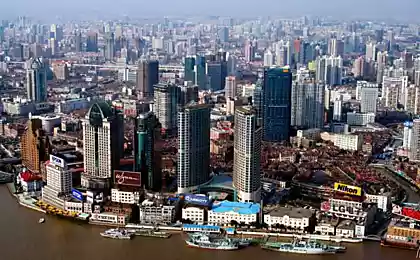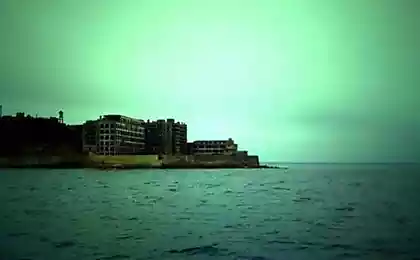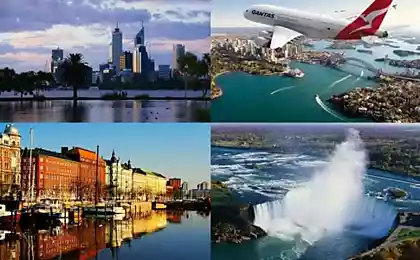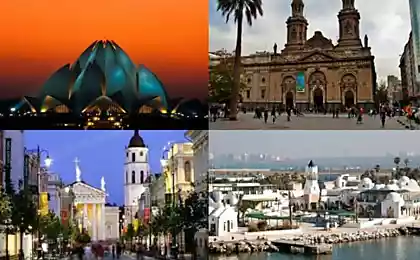227
Why Ashgabat is called the city of dreams and what is special about it
On the shore of the Caspian Sea, among the deserts of Central Asia, the amazing country of Turkmenistan stretches. And, like a sparkling pearl in the middle of black sands, it is the white-stone city of Ashgabat that attracts the attention of tourists from all over the world. The capital of Turkmenistan was often compared to the richest city of Dubai, and songs about it are sung “Tale City, Dream City”. But the delights of tourists quickly disappear, if they get to modern Ashgabat, which can be safely called the most beautiful city of the former Soviet republic. Why is that?
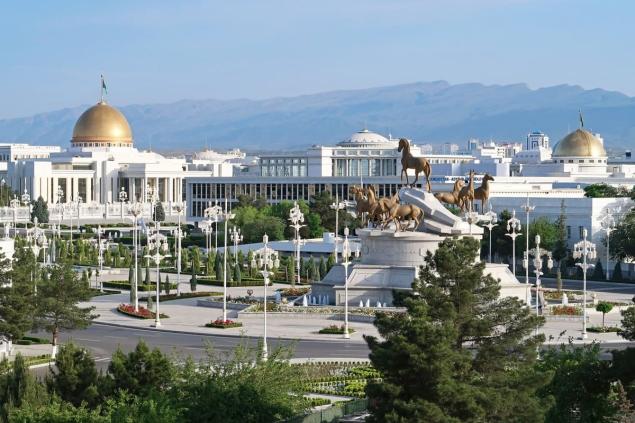
It will not be half an hour from the beginning of your walk along the widest avenues, as you will overcome anxiety and loneliness. And indeed, not a single living soul can be seen on the streets of a huge city. No couples walking around the squares, no children playing, no ice cream vendors. One would think that this city is completely dead, if not for the flow of cars scurrying back and forth. The mystery of Ashgabat is more complex than it may seem at first glance.
Probably, there is not a single city in the post-Soviet space that would be built on such a scale as Ashgabat. The city owes its snow-white appearance and sparkling gold to the first president of Turkmenistan, Saparmurat Niyazov, who gave the order: absolutely all architectural objects in New Ashgabat should be finished with white marble.
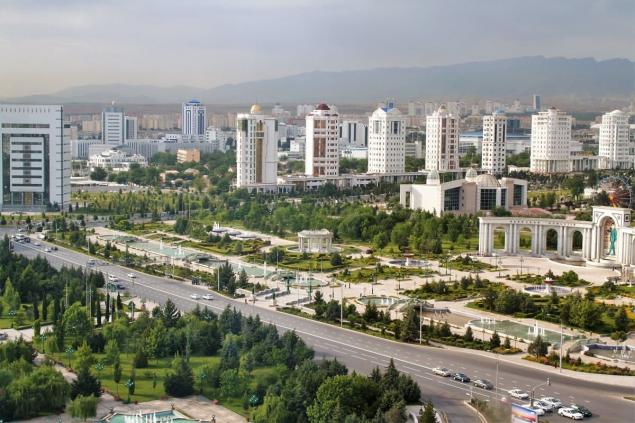
This was not just a wish, but a direct order: construction companies were required to provide a plan with the mandatory inclusion of marble, as well as demonstrate the availability of this material for construction. There's no way! Ashgabat entered the Guinness Book of Records as the city with the largest number of objects decorated with white marble. These are not only squares and office buildings, not only monuments and railway stations, but even markets and avenues.
In addition to luxury, there is some common sense. The weather in Turkmenistan is sharply continental, and in those points that are closer to the desert, in summer the temperature can rise to 50 degrees. White walls reflect sunlight well and keep cool. And in winter they help the city to look not as dull and dull as, for example, some cities in Europe in the cold season.
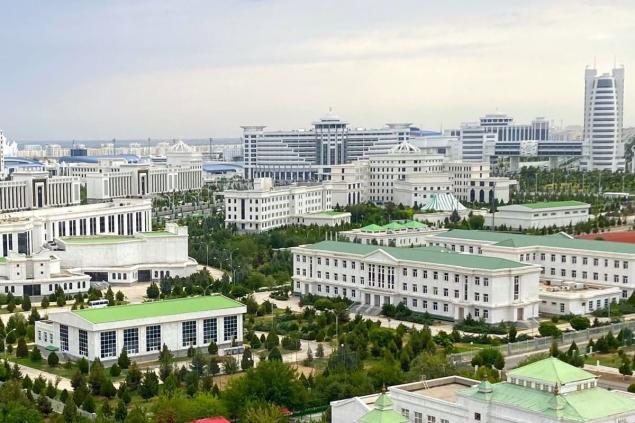
Wikimedia “The most, most” city of the post-Soviet space And what is the only international airport of Ashgabat, which was built in 2016? For its construction, the authorities allocated 2,300 million dollars. And this is not only because of the marble and unique ornamental finish (thanks to which the airport also got into the Guinness Book of Records). From a bird's eye view, it becomes obvious that the airport is built in the shape of a soaring falcon.
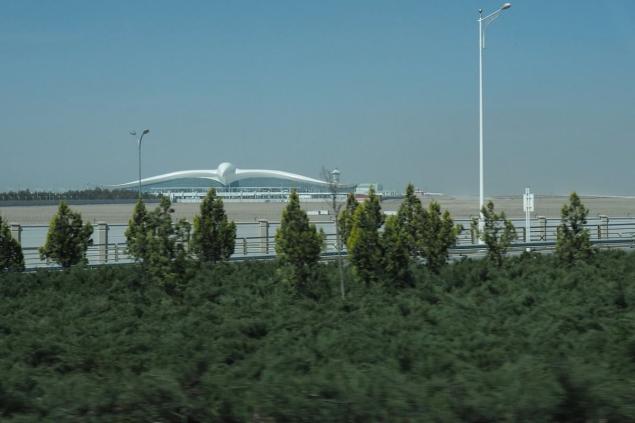
Not only is Ashgabat recognized as the most marble city in the world (with 4 and a half million square meters of stone), it also occupies an honorable place in the list of the most lit cities. At night Ashgabat sparkles and shimmers with all the colors of the rainbow. And even in the ranking of flagpoles, the first place is occupied by the banner of Turkmenistan in the capital Ashgabat, fluttering at an altitude of 133 meters.
In general, we can say with confidence that the authorities of Turkmenistan purposefully fought for the status of Ashgabat only as the "most-most" city. Imagine how much money was invested in this place. And for who? Who enjoys all this beauty when the streets are empty and lifeless? How did that even happen?
Why Ashgabat City Is Empty
Look at this avenue, don't you notice anything strange? For example, no sidewalks for pedestrians? That’s right: the main reason why you can’t meet passers-by on the streets of the city is the layout of the city. It was not built for people, it was built as a national treasure. I forgot to think about the convenience of people.
Most often the streets move only cars, and even then not always. Even the main roads are not burdened with cars or public transport. By the way, only buses and taxis are available from public transport in Ashgabat. Buses are limited only a few times a day. The wait at the stops lasts one and a half to two hours. Authorities regularly promise to replenish the bus fleet, but the situation with public transport only worsens.
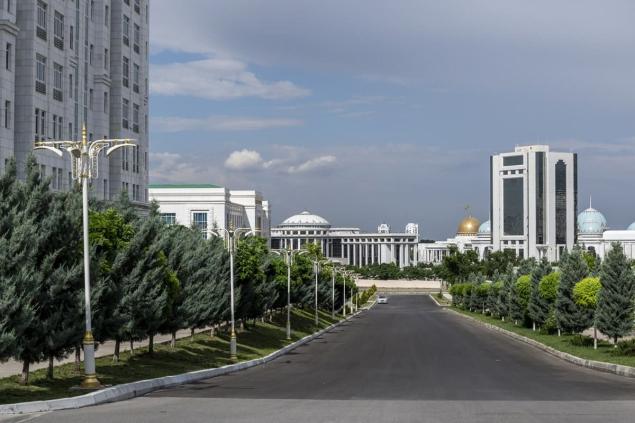
Another detail that can confuse any tourist is the feeling of being lost in time. Getting to Ashgabat, a foreigner can feel like a guest of another era. And it's not just that. The fact is that the city was rebuilt according to the Soviet architectural methodologies of the 50s and 60s. That is, even at the time of its transformation, the designs became outdated as half a century ago. And now heavy monumentalism instantly throws us back, in the days of the USSR.
But this was not the key detail that doomed Ashgabat to the role of a ghost town. After all, this is how it looks only in its central part, while in its suburbs life is boiling.
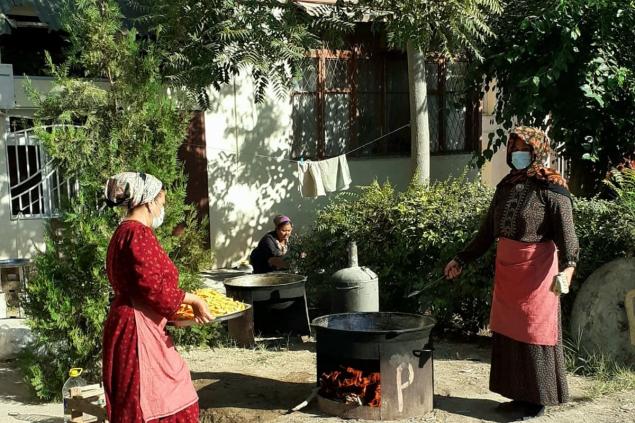
The city itself is relatively young, only 143 years old. But during this time it managed to rebuild from scratch at the turn of the millennium. The fact is that in the nineties almost all the old houses were demolished to make way for new magnificent buildings. And the citizens living in these houses were evicted to the outskirts of the city. It is there, in nondescript three-storey buildings and small courtyards, that locals live. They call their residential areas “Real Ashgabat” because almost no one lives in the central part of the city.

More precisely, only politicians and businessmen can afford to live in luxurious marble buildings with air conditioning. And ordinary people have to huddle in the outskirts of the city. Many locals trade, sitting right on the street. Someone even cooks in the yards. Schools are the most ordinary, without any frills.
As a result, Ashgabat is a huge monument, unsuitable for the life of ordinary mortals. And although it impresses with its beauty, even tourists here are not frequent guests. While it is certainly worth visiting this gem of Central Asia – the site is unique in nature, there are really no other such cities. What do you think? Would you like to visit the capital of Turkmenistan?

It will not be half an hour from the beginning of your walk along the widest avenues, as you will overcome anxiety and loneliness. And indeed, not a single living soul can be seen on the streets of a huge city. No couples walking around the squares, no children playing, no ice cream vendors. One would think that this city is completely dead, if not for the flow of cars scurrying back and forth. The mystery of Ashgabat is more complex than it may seem at first glance.
Probably, there is not a single city in the post-Soviet space that would be built on such a scale as Ashgabat. The city owes its snow-white appearance and sparkling gold to the first president of Turkmenistan, Saparmurat Niyazov, who gave the order: absolutely all architectural objects in New Ashgabat should be finished with white marble.

This was not just a wish, but a direct order: construction companies were required to provide a plan with the mandatory inclusion of marble, as well as demonstrate the availability of this material for construction. There's no way! Ashgabat entered the Guinness Book of Records as the city with the largest number of objects decorated with white marble. These are not only squares and office buildings, not only monuments and railway stations, but even markets and avenues.
In addition to luxury, there is some common sense. The weather in Turkmenistan is sharply continental, and in those points that are closer to the desert, in summer the temperature can rise to 50 degrees. White walls reflect sunlight well and keep cool. And in winter they help the city to look not as dull and dull as, for example, some cities in Europe in the cold season.

Wikimedia “The most, most” city of the post-Soviet space And what is the only international airport of Ashgabat, which was built in 2016? For its construction, the authorities allocated 2,300 million dollars. And this is not only because of the marble and unique ornamental finish (thanks to which the airport also got into the Guinness Book of Records). From a bird's eye view, it becomes obvious that the airport is built in the shape of a soaring falcon.

Not only is Ashgabat recognized as the most marble city in the world (with 4 and a half million square meters of stone), it also occupies an honorable place in the list of the most lit cities. At night Ashgabat sparkles and shimmers with all the colors of the rainbow. And even in the ranking of flagpoles, the first place is occupied by the banner of Turkmenistan in the capital Ashgabat, fluttering at an altitude of 133 meters.
In general, we can say with confidence that the authorities of Turkmenistan purposefully fought for the status of Ashgabat only as the "most-most" city. Imagine how much money was invested in this place. And for who? Who enjoys all this beauty when the streets are empty and lifeless? How did that even happen?
Why Ashgabat City Is Empty

Look at this avenue, don't you notice anything strange? For example, no sidewalks for pedestrians? That’s right: the main reason why you can’t meet passers-by on the streets of the city is the layout of the city. It was not built for people, it was built as a national treasure. I forgot to think about the convenience of people.
Most often the streets move only cars, and even then not always. Even the main roads are not burdened with cars or public transport. By the way, only buses and taxis are available from public transport in Ashgabat. Buses are limited only a few times a day. The wait at the stops lasts one and a half to two hours. Authorities regularly promise to replenish the bus fleet, but the situation with public transport only worsens.

Another detail that can confuse any tourist is the feeling of being lost in time. Getting to Ashgabat, a foreigner can feel like a guest of another era. And it's not just that. The fact is that the city was rebuilt according to the Soviet architectural methodologies of the 50s and 60s. That is, even at the time of its transformation, the designs became outdated as half a century ago. And now heavy monumentalism instantly throws us back, in the days of the USSR.
But this was not the key detail that doomed Ashgabat to the role of a ghost town. After all, this is how it looks only in its central part, while in its suburbs life is boiling.

The city itself is relatively young, only 143 years old. But during this time it managed to rebuild from scratch at the turn of the millennium. The fact is that in the nineties almost all the old houses were demolished to make way for new magnificent buildings. And the citizens living in these houses were evicted to the outskirts of the city. It is there, in nondescript three-storey buildings and small courtyards, that locals live. They call their residential areas “Real Ashgabat” because almost no one lives in the central part of the city.

More precisely, only politicians and businessmen can afford to live in luxurious marble buildings with air conditioning. And ordinary people have to huddle in the outskirts of the city. Many locals trade, sitting right on the street. Someone even cooks in the yards. Schools are the most ordinary, without any frills.
As a result, Ashgabat is a huge monument, unsuitable for the life of ordinary mortals. And although it impresses with its beauty, even tourists here are not frequent guests. While it is certainly worth visiting this gem of Central Asia – the site is unique in nature, there are really no other such cities. What do you think? Would you like to visit the capital of Turkmenistan?
What dishes of our cuisine beat the appetite of foreigners and make them puzzled
Recently, my husband proposed to me, but I was just upset.







